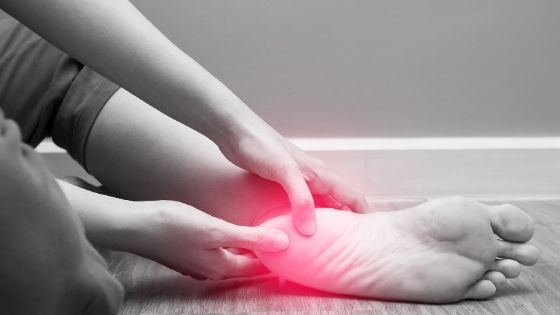Yin Yoga benefits are vast. I don’t think there is another yoga practice on the planet that will leave you feeling so at peace as you do after a yin practice. Unwinding the body, unwinds the mind.
On a physical level, yin yoga helps to release restrictions in the body which helps to increase your overall flexibility and joint mobility. However, flexibility is about more than muscle length and joint mobility. Fascia, like most connective tissue in the body, can also restrict the movement of joints and muscles. This can impact your ability to move with ease. Developing a yin yoga practice can get you in touch with this tissue and how it’s holding you back.
What is fascia?
Fascia spans the whole body: running deep between the organs and also superficially beneath the skin. It surrounds individual muscles and groups of muscles and depending on your patterns of movement, fascia can become restrictive.
Plantar Fascia is a thick band of fascia on the underside of the foot. And connects to tissue that spans all the way to the base of the skull. Restrictions in this tissue are generally due to running, and walking in unsupportive or restrictive footware.

When restrictions or adhesions are left untreated, your balance can become limited and in severe cases, can result in a condition called plantar fasciitis. This is basically inflammation of the tissue and presents most commonly as pain in the heel. The key to avoiding either eventuality is to invest your attention in releasing the tissue to maintain its malleability.
A great exercise for releasing the plantar fascia is to sit kneeling down with your toes tucked under you. Try to hold for 30 seconds and slowly work your way up to 2-5 minutes. This exercise is uncomfortable for most, but will improve with consistency. I suggest incorporating this into your yoga practice, either before or after your practice, or with your bed time routine.
Just like muscular tissue, cold tissue is difficult to manipulate. I would recommend doing this in a warm space or after a bath or shower.
Why Yin Yoga?
Now fascial tissue is different than muscular tissue. It lacks the elasticity. So in order to facilitate any release, you have to hold the tension for an extended period of time. This is when the yin yoga practice is ideal for improving flexibility through fascial release. This is a practice of you holding positions for anywhere between 30 second and 10 minutes. It is a practice of letting go of muscular tension so that you are able to target the other tissues in the body which affect your overall mobility and flexibility.
